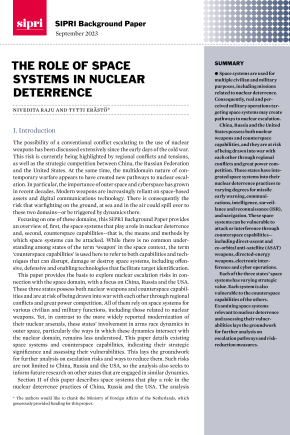The Role of Space Systems in Nuclear Deterrence
Space systems are used for multiple civilian and military purposes, including missions related to nuclear deterrence. Consequently, real and perceived military operations targeting space systems may create pathways to nuclear escalation.
China, Russia and the United States possess both nuclear weapons and counterspace capabilities, and they are at risk of being drawn into war with each other through regional conflicts and great power competition. These states have integrated space systems into their nuclear deterrence practices to varying degrees for missile early warning, communications, intelligence, surveillance and reconnaissance (ISR), and navigation. These space systems can be vulnerable to attack or interference through counterspace capabilities—including direct-ascent and co-orbital anti-satellite (ASAT) weapons, directed-energy weapons, electronic interference and cyber operations.
Each of the three states’ space systems has varying strategic value. Each system is also vulnerable to the counterspace capabilities of the others. Examining space systems relevant to nuclear deterrence and assessing their vulnerabilities lays the groundwork for further analysis on escalation pathways and risk-reduction measures.
I. Introduction
II. Space systems relevant to nuclear deterrence
III. Counterspace capabilities
IV. Assessing vulnerabilities
V. Conclusions


